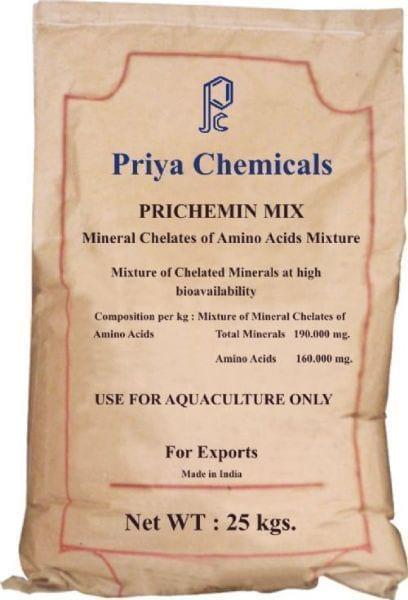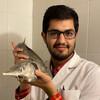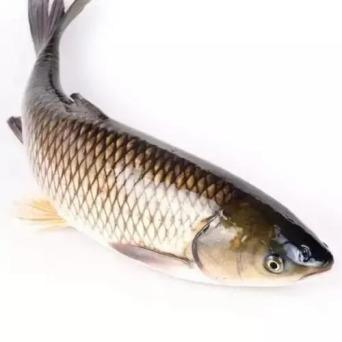Explore all the information on
Aquaculture health
Welcome to the page about Aquaculture health of Engormix; a source of knowledge on Aquaculture health.
Introduction Ctenophora, a phylum of animal kingdom, is obiquoitous. Mnemiopsis leidyi is one of the species of comb-jelly belongs to Ctenphora phylum. The main habitat of this ctenophore is the east coast of North and South America, which covers the Atlantic coastal zone from latitude 40° North to 46° South (Harbison and Volovik, 1994). The introduction of this species into the Caspian Sea in December 1999 (Esmaili Sari et al., 2001) and must adopt to new conditions of...
Comments : 0
Recommendations: 1
Vibrio parahaemolyticus is a Gram-negative bacterium that can be found in coastal areas and estuaries. Rising ocean temperatures during recent years have contributed to its global dissemination. Vibrio parahaemolyticus can infect fish, shrimp, shellfish and other aquaculture...
Comments : 0
Recommendations: 1


PRICHEMIN MIX
Priya's PRICHEMIN MIX is a mineral supplement for aquaculture. It consists of a mix of mineral chelats from aminoacids
Suggested link
Disease management and prevention has become one of the top priorities for the aquaculture industry. This is due partly to economic losses, caused by disrupted production, and partly to sustainability issues and increased pressure to reduce the use of antibiotics and...
Comments : 4
Recommendations: 4
Introduction Shrimp farming is one of the most important aquaculture practices worldwide. In shrimp-farming operations, one of the primary wastes of concern is nitrogen. The built-up of nitrogenous waste in the form of ammonia, nitrite and nitrate from the shrimp continuously degrade the culture environment. Ammonia is excreted by animals and also arises from decomposing organic solids such as uneaten feed. The excess feed and fecal matter deposited in the bottom of the pond...
Comments : 1
Recommendations: 2


PRICHEMIN MIX
Priya's PRICHEMIN MIX is a mineral supplement for aquaculture. It consists of a mix of mineral chelats from aminoacids
Suggested link
Aquaculture plays a major role in augmenting food production, livelihood and thereby the economy of a country. Diseases are the outcome of imbalance between environment, host and pathogen. During the past three decades, viral and bacterial diseases have emerged as serious impediments to shrimp farming. Concomitant with the expansion and Intensification of shrimp aquaculture, large number of diseases, especially those caused by viral infection, have been recorded in farmed shrimp. The...
Comments : 1
Recommendations: 1
The efficacy of a single cell protein (SCP) methanotroph (Methylococcus capsulatus, Bath) bacteria meal (FeedKind®, Calysta, Menlo Park, CA, United States), in Pacific white shrimp (Penaeus vannamei) diets was studied to determine growth performance, survival rate and disease resistance against Vibrio parahaemolyticus causing Acute Hepatopancreatic Necrosis Disease (AHPND). The growth trial was assigned in a completely randomized design (CRD) with four treatments and 5 replicates of...
Comments : 0
Recommendations: 1


PRICHEMIN MIX
Priya's PRICHEMIN MIX is a mineral supplement for aquaculture. It consists of a mix of mineral chelats from aminoacids
Suggested link
1. Introduction Over the years, water pollution has become one of the major environmental challenges facing most of the states in Southern Nigeria, particularly the Niger Delta region. Niger Delta is one of the most prominent regions in Nigeria with vast aquatic ecosystems greatly blessed with variety of fish species both Fin and Shell fishes [1]. Amongst other states in the region, Rivers and Bayelsa State coastal waters are faced with massive environmental pollutions due to...
Comments : 0
Recommendations: 0
Introduction Global aquaculture production has been steadily increasing over the last decade. Asian countries like Taiwan, Indonesia, Thailand and India have emerged as global leaders in shrimp production. In order to bridge the gap between world demand and supply of shrimp, many countries have undertaken intensive shrimp culture. Disease and production problems vary...
Comments : 15
Recommendations: 4


PRICHEMIN MIX
Priya's PRICHEMIN MIX is a mineral supplement for aquaculture. It consists of a mix of mineral chelats from aminoacids
Suggested link
I. INTRODUCTION Vibrios have emerged as a major problem affecting shrimp culture across the world. The Outbreaks and mass mortalities of vibrios in hatcheries and grow out ponds of shrimp have been reported across many regions (Couch 1978; Overstreet 1978; Lightner 1983, 1985, 1988, 1996; Sindermann 1990; Ruangpan and Kitao 1991, 1992; Chen et al. 1992; Yang et al. 1992; de la Pena et al. 1993; Jiravanichpaisal et al. 1994;...
Comments : 1
Recommendations: 0
Gut health results from interactions of host-specific intrinsic characteristics with several factors such as environment microbiome, nutritional status, feed quality, biotic and abiotic stress. Disturbances can be hard to predict and are observed as...
Comments : 0
Recommendations: 1


PRICHEMIN MIX
Priya's PRICHEMIN MIX is a mineral supplement for aquaculture. It consists of a mix of mineral chelats from aminoacids
Suggested link
This study aimed to investigate the prevalence, antibiogram of Pseudomonas aeruginosa (P. aeruginosa), and the distribution of virulence genes (oprL, exoS, phzM, and toxA) and the antibiotic-resistance genes (blaTEM, tetA, and blaCTX-M). A total of 285 fish (165 Oreochromis niloticus and 120 Clarias gariepinus) were collected randomly from private fish farms in Ismailia Governorate, Egypt. The collected specimens were examined bacteriologically. P. aeruginosa was isolated from 90 examined...
Comments : 0
Recommendations: 0
As a fish field practitioner what will you do if you observe significant degrees of hypopigmentation or pigmentation loss? Which clinical tests are recommended? Fish type: Rainbow trout (Oncorhynchus mykiss) The culture is intensive and the water quality is unknown Regards, Ahmadreza ...
Comments : 0
Recommendations: 0


PRICHEMIN MIX
Priya's PRICHEMIN MIX is a mineral supplement for aquaculture. It consists of a mix of mineral chelats from aminoacids
Suggested link
How do we tell weather the grass carp gets ill or not? Or what's the symptom of each disease respectively? What should we do with these symptoms to prevent us from loss? Extracted content: Viral hemorrhagic disease Symptoms: Spots or masses of hemorrhage appear in various tissues, organs or tissues on the surface of the sick fish, and even hemorrhage throughout the body. After the epidermis is torn off, the whole body muscles can be seen red. The gill filaments are bleeding or pale,...
Comments : 0
Recommendations: 1
Introduction Because of the very high expensive costs of the local red (from farm animals, as buffaloes, beef, sheep, goats, and camels) and white meats (from poultry, as broilers, ducks, geese, and pigeons), the Egyptian tended to consume (1.8 million ton yearly) more fish than they produce [1.4 million ton, from which 70 % (705 thousand ton from aquaculture, i.e. farming)]. Therefore, Egypt import fish to overcome the increasingly human demand of the nutritional valuable fish...
Comments : 2
Recommendations: 1


PRICHEMIN MIX
Priya's PRICHEMIN MIX is a mineral supplement for aquaculture. It consists of a mix of mineral chelats from aminoacids
Suggested link
Water is an important resource for life support and undeniably, there is hardly any human activity without the use of water. The earth is occupied by water, of which 97% are saline in the oceans, while 3% is freshwater contained in the poles (i.e. in the form of ice), rivers, lakes, streams and groundwater which supply most of human and animal needs (Al-Ghamdi et al., 2014). Water can be sourced principally from surface waters which include streams, rivers, lakes and lagoons (Okey-Wokeh et...
Comments : 0
Recommendations: 0
INTRODUCTION Among the essential amino acids (AA), L-arginine (ARG) is one of the functional amino acids in animals. ARG is a nutritionally very important and essential AA for fish, and is considered the fourth limiting AA in aquafeed. Most of fish species excretes ammonia predominantly through the gills, diffusing NH 3 or NH 4 (ammoniotelic animals). Therefore, unlike mammals, fish have a low hepatic activity of carbamoyl phosphate synthase III or ornithine carbamoyl...
Comments : 0
Recommendations: 1


PRICHEMIN MIX
Priya's PRICHEMIN MIX is a mineral supplement for aquaculture. It consists of a mix of mineral chelats from aminoacids
Suggested link
Emerson Kagoo, Aquaculture Manager India, Srilanka and Bangladesh for Phileo Lessafre Animal Care, sums up the actual situation of the aquaculture industry in some parts of Asia and speaks about the innovative products Phileo offers for the aqua producers....
Comments : 18
Recommendations: 3
is it ok to transfer the healthy shrimp to the recently harvested white feces syndrome affected pond which was heavily chlorinated? ...
Comments : 0
Recommendations: 0


PRICHEMIN MIX
Priya's PRICHEMIN MIX is a mineral supplement for aquaculture. It consists of a mix of mineral chelats from aminoacids
Suggested link
In a farming environment, the homeostasis of aquatic animals can be disrupted by several factors, such as water quality, stocking density, diet, sanitary status, pollution, and contaminants, etc. Sub-optimal conditions, depending on their intensity and duration, can result in acute or...
Comments : 0
Recommendations: 2
Olivier Decamp (INVE Aquaculture) gave a presentation about the industry challenges and the contribution of probiotics in the increased production of shrimp, during the CIAC Trade-show....
Comments : 4
Recommendations: 3














